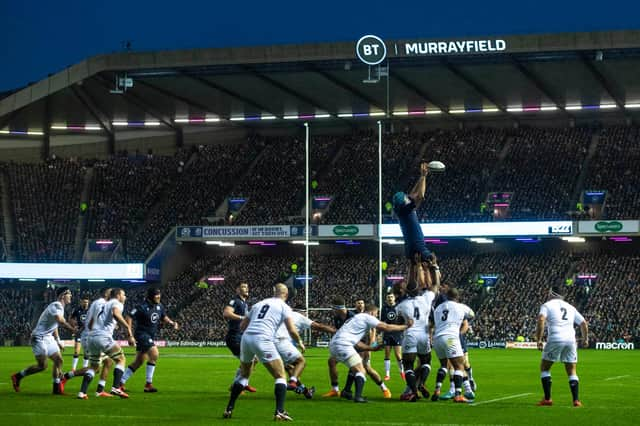Scotland sell-out shows desire for rugby but we must not allow imagination on field to be dulled


Talking of that eagerness, I trust that the ban on parents attending school matches is about to be lifted. Given the restored freedom to congregate elsewhere, indeed almost everywhere else in the open air, it’s well nigh impossible to see any justification for this ban.
The number of internationals now played and the number of players used as replacement mean that there are far more current and still active Scottish internationalists than ever before, even in the days when a player might be ruthlessly discarded after a single cap. I haven’t done the sums, but I would guess that you could probably field four XVs of Scottish internationals who are still playing professional rugby. Indeed, that might be an underestimate.
Advertisement
Hide AdAdvertisement
Hide AdThere are for instance four fly-halves: Finn Russell, Adam Hastings, Duncan Weir and Jaco van der Walt. Weir on his return to Glasgow was selected to start last night’s opening URC match in Belfast, but young Ross Thompson played with such composure and such impressive game-management when he emerged as Glasgow’s best fly-half last season, that it will be surprising if he isn’t very soon challenging Hastings and Weir for the role of understudy to Finn.
As I remarked the other week, seven or eight of Gregor Townsend’s probable first choice XV now play their club rugby in England and France. Nevertheless, on paper, if at full strength, both Glasgow and Edinburgh look better equipped than for a couple of seasons. This is partly because there has been what seems intelligent recruitment, partly because of the promise displayed by a number of youngsters who took advantage of opportunities being generously offered in the Covid-disrupted months.
It will be interesting to see what effect the new 50:22 law, or trial law, has. Essentially this means that if you kick from your own half and bounce the ball into touch in the opposition 22, you will be rewarded with the throw-in at the line-out. The present law will still apply if you kick full into touch without bouncing the ball. The intention is that the side not in possession will feel obliged to have players, usually the wings, lying deep rather than being up in the defensive line, thus creating more opportunities if the fly-half or first receiver opts to pass rather than kick. It’s an interesting idea and it may have the intended result which is to make handling and passing movements a more attractive option. Of course, if the kick is fielded instead of bouncing into touch, the fielder is likely to reply with a kick ahead and so we have another round of aerial ping-pong.
Actually of course, it’s rarely the laws that are at fault. It’s not the laws that stifle imagination or make for tedious play. It’s all in the mind. If for more than 90 per cent of the time the South Africa Lions series didn’t delight – no matter how close the matches were – it was because there was very little imagination or daring on view. Since then the All Blacks have shown that the Laws limit your ability to play adventurously only if you permit them to do so. Meanwhile, Australia have twice defeated South Africa, by declining to let them dictate the style and rhythm of the game.
That rhythm is all too often disturbed, even destroyed by the too frequent recourse to the television match official and the time spent in long discussion s between the referee and the TMO. These discussions are boring, and quite often don’t even settle the matter under discussion. More boldness from referees is the answer. Let them trust their own judgement as amateur ones do every weekend..
Finally, nothing – apart from the TMO – eats up time like place-kicking. It’s unnecessary and one might even venture to say that the condition of the modern ball and the provision of tees make it too easy. Of course it’s a skill, but is it one we still need? Drop-kicking is also a skill and one which doesn’t consume time. People quite reasonably call for a limit on the number of replacements permitted on the grounds that it will mean there are fewer mightily muscled men who can be substituted before they tire. Well, getting rid of place-kicks would have the same effect. No 90 seconds or two-minute breathers while the place-kicker gets ready to kick. It’s quite usual for 15, or even 20, minutes of a match to be taken up watching these preparations.